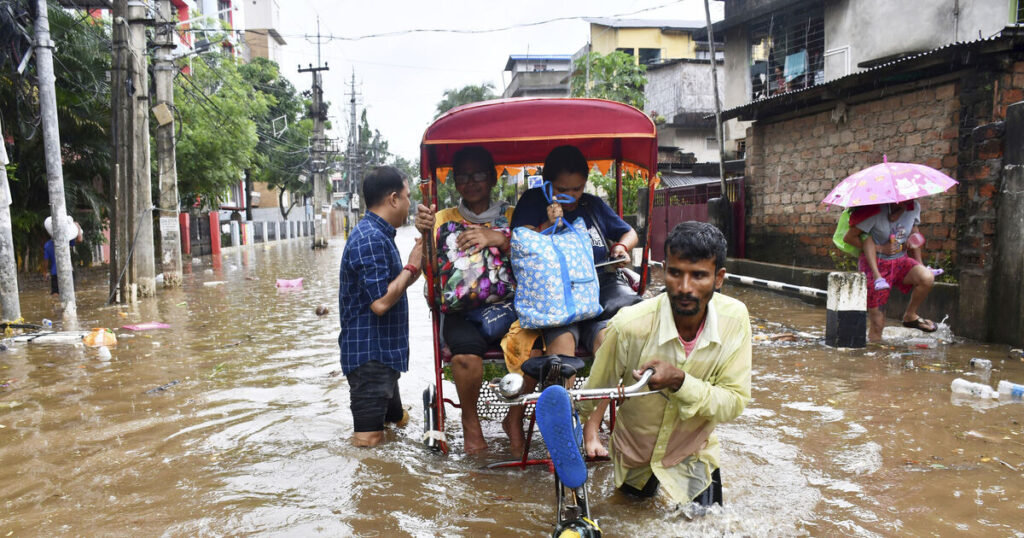At least 22 people have died due to landslides and flash floods in northeastern India, caused by days of persistent monsoon rains.
In Assam state’s Guwahati city, five people, including three members of the same family, perished on Saturday when their residences were engulfed by a mudslide, according to a flood bulletin.
In bordering Arunachal Pradesh, seven individuals were killed on Friday after their vehicle was swept away by raging floodwaters. Separately, two others drowned within the state.
Official figures indicate that in the last 24 hours, eight deaths have occurred across Mizoram, Tripura and Meghalaya due to rain-induced floods and mudslides.
In Assam, electricity has been cut off in several areas by authorities to mitigate electrocution risks, stated Chief Minister Himanta Biswa Sarma.
The heavy rainfall also triggered flooding in numerous urban areas of Guwahati, Assam, resulting in prolonged power disruptions on Friday night and the subsequent closure of schools and colleges on Saturday.
The Indian Meteorological Department has predicted further heavy rainfall in the region in the coming days.
The annual monsoon season in India, spanning from June to September, provides relief from the intense summer heat. However, the rains that are vital for seasonal crops frequently cause widespread devastation, particularly in the northeastern region, an area particularly susceptible to the effects of climate change.
Scientists suggest that monsoons are becoming increasingly unpredictable due to extreme weather patterns and global warming, leading to more frequent landslides and flash floods in India’s Himalayan north.


